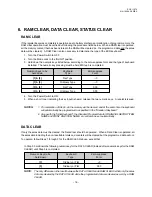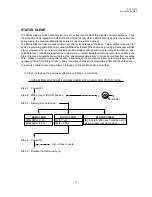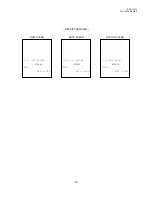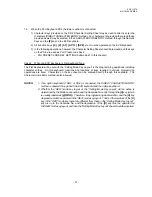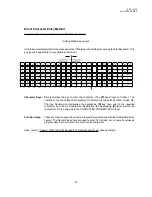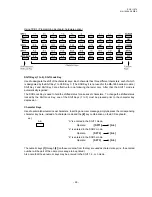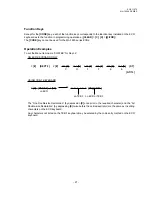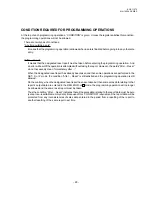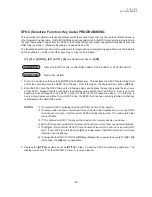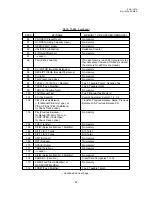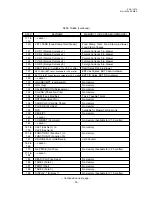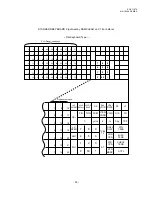
- 21 -
EO3-11070
MA-1650-4 SERIES
1-3
When the PLU Keyboard PK-2 (hardware option) is connected:
1) Character Keys provided on the PK-2 Character Setting Sheet may be used to directly enter the
characters (DIRECT CHARACTER ENTRY method). Any characters not provided there (and those
provided as well) may be entered, in the CHARACTER CODE ENTRY method, through the Numeric
Keys and the [#] key on the ECR keyboard.
2) All Function keys ([C], [X], [ST], [AT/TL], [DP#], etc.) must be operated on the ECR keyboard.
3) In the following operations, however, the Character Setting Sheet should be removed and the keys
on the PK-2 are used as PLU Preset-code Keys:
•
PLU PRESET-CODE KEY SETTING (Submode 27 in this chapter)
Case 2: When the ECR Keyboard is Flat Keyboard Type:
The Flat Keyboard will be set with the “Setting Mode Key Layout” in the programming operations including
character entries. On this keyboard, functions and locations of keys required in various programming
operations are fixed. Characters on the key sheet can be entered directly through this keyboard. The
Character Code Entry method is also allowed.
NOTES:
1. If an option keyboard (TKB-1 or PK-2) is connected, the DIRECT CHARACTER ENTRY
method is allowed through both the ECR keyboard and the option keyboard.
2. Whether the “REG” mode key layout or the “Setting Mode Key Layout” will be active is
determined by the Mode Lock position and the Submode No. entry through the [X] key (which
is usually labeled as [@/FOR]). Therefore, the programming Submode No. and the [X] key
depression must be operated in the “REG” mode key layout. That is, if the locations of the [X]
key in the “REG” mode key layout are different from those in the “Setting Mode Key Layout”,
key-ins up to the Submode No. and the depression of the [X] key must be operated on
the“REG” mode key layout, and then the “Setting Mode Key Layout” sheet should be inserted.










